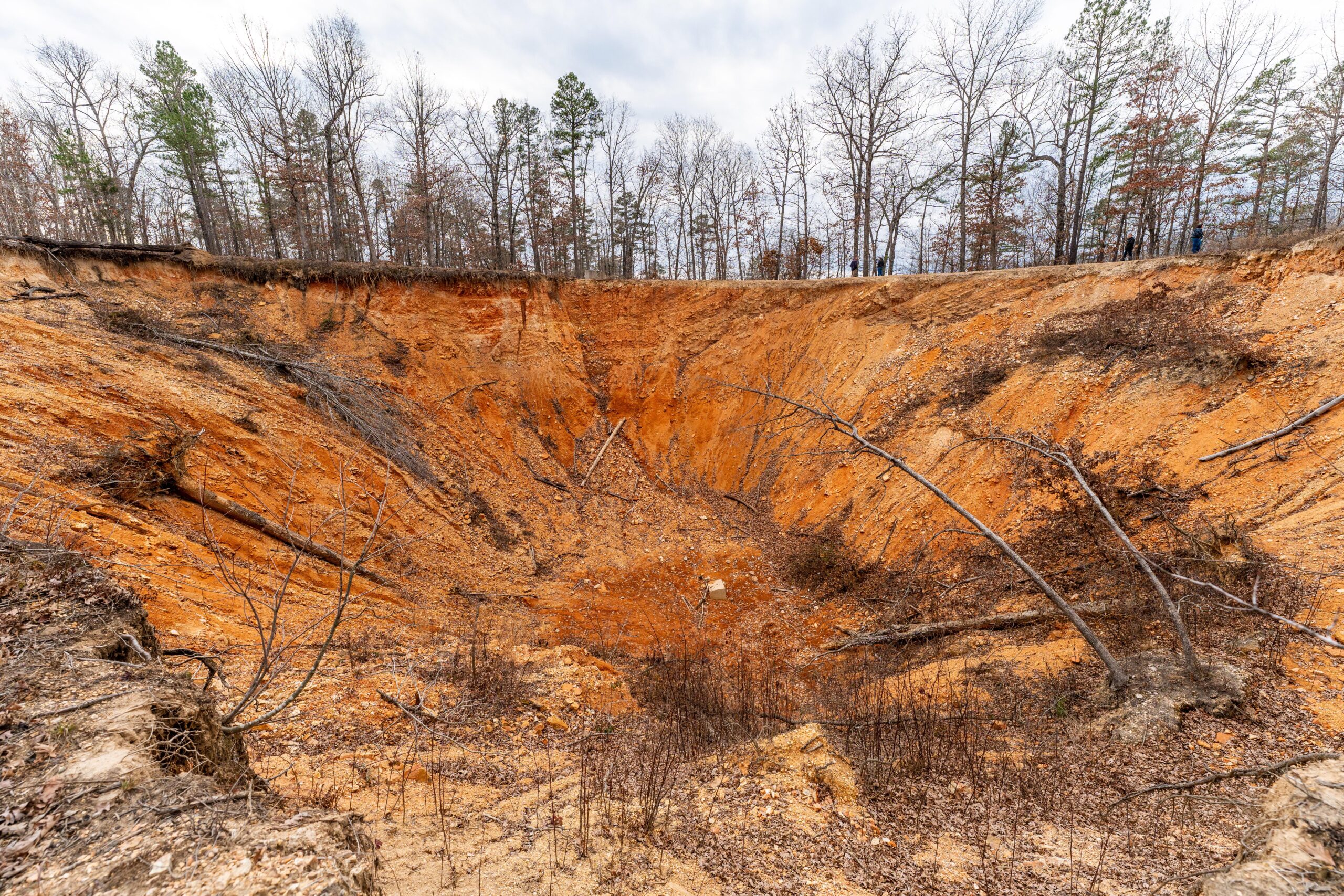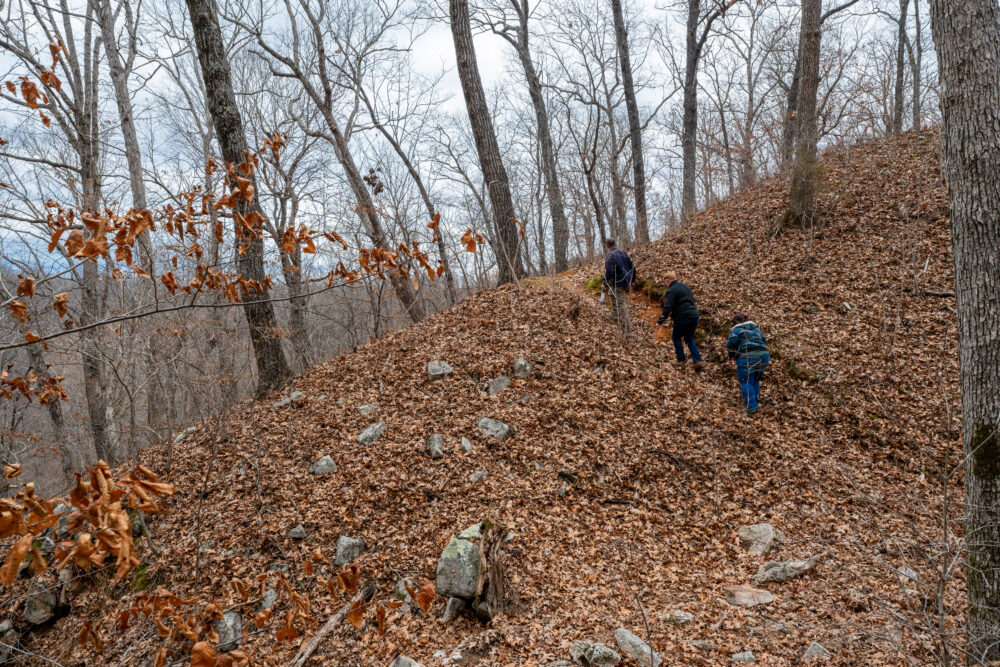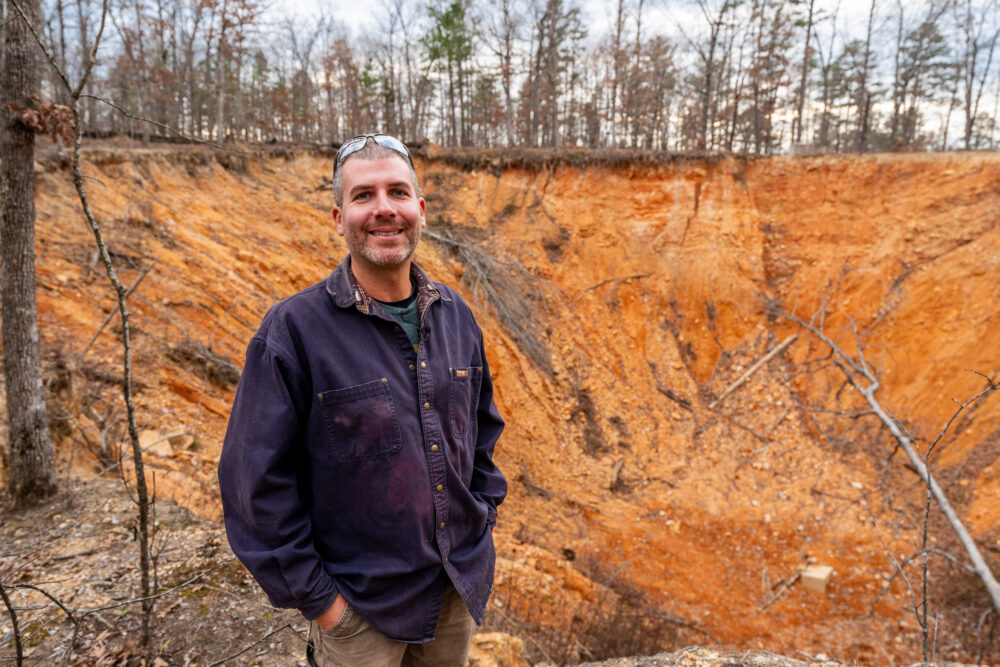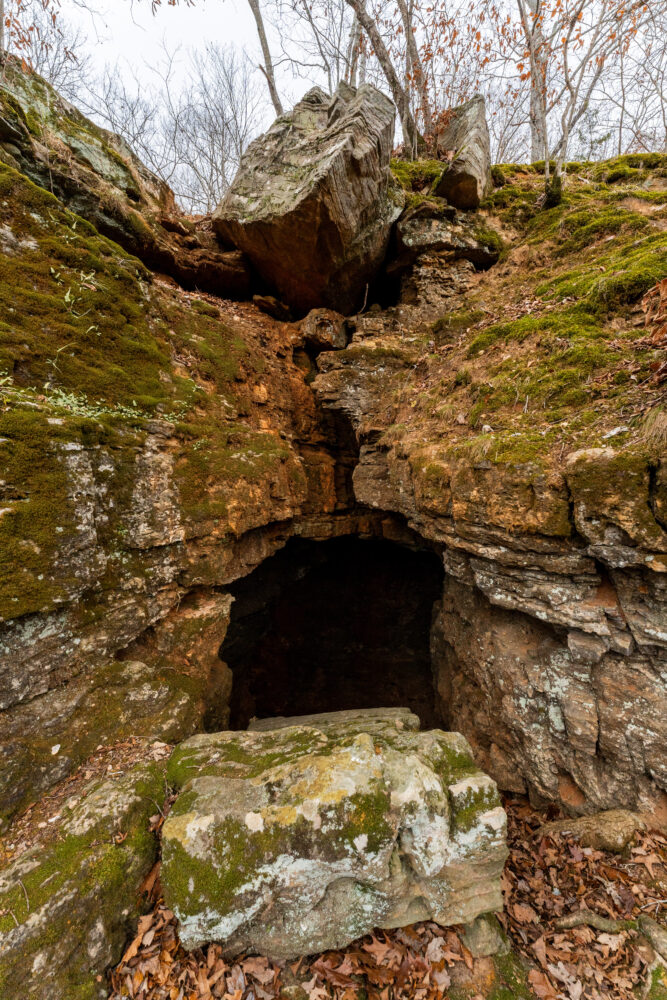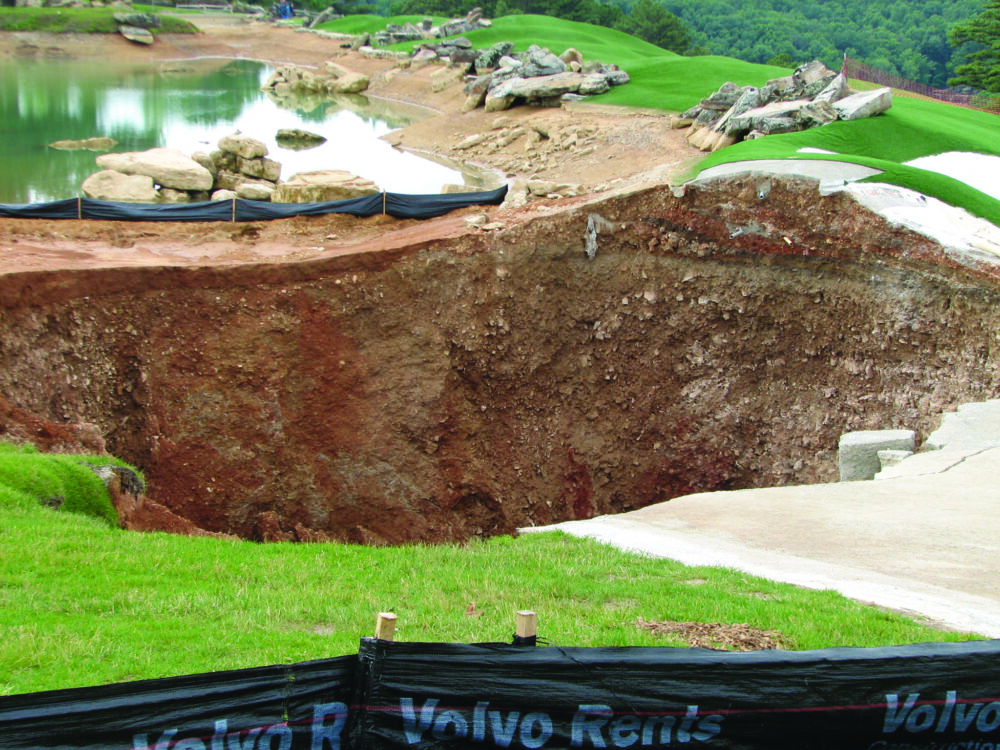A massive sinkhole developed in Reynolds County in 2020 and continues to grow. For scale, four people can be seen standing along the rim of the sinkhole in the upper right of the photo.
Published by
on
There are approximately 16,000 known sinkholes in Missouri and more develop each year. Nearly every day, the Missouri Department of Natural Resources’ Missouri Geological Survey receives a phone call about the newest collapses. Sometimes callers are panicked and other times just curious. In nearly every case, a geologist must dispel the many misconceptions surrounding one of Missouri’s most iconic natural features.
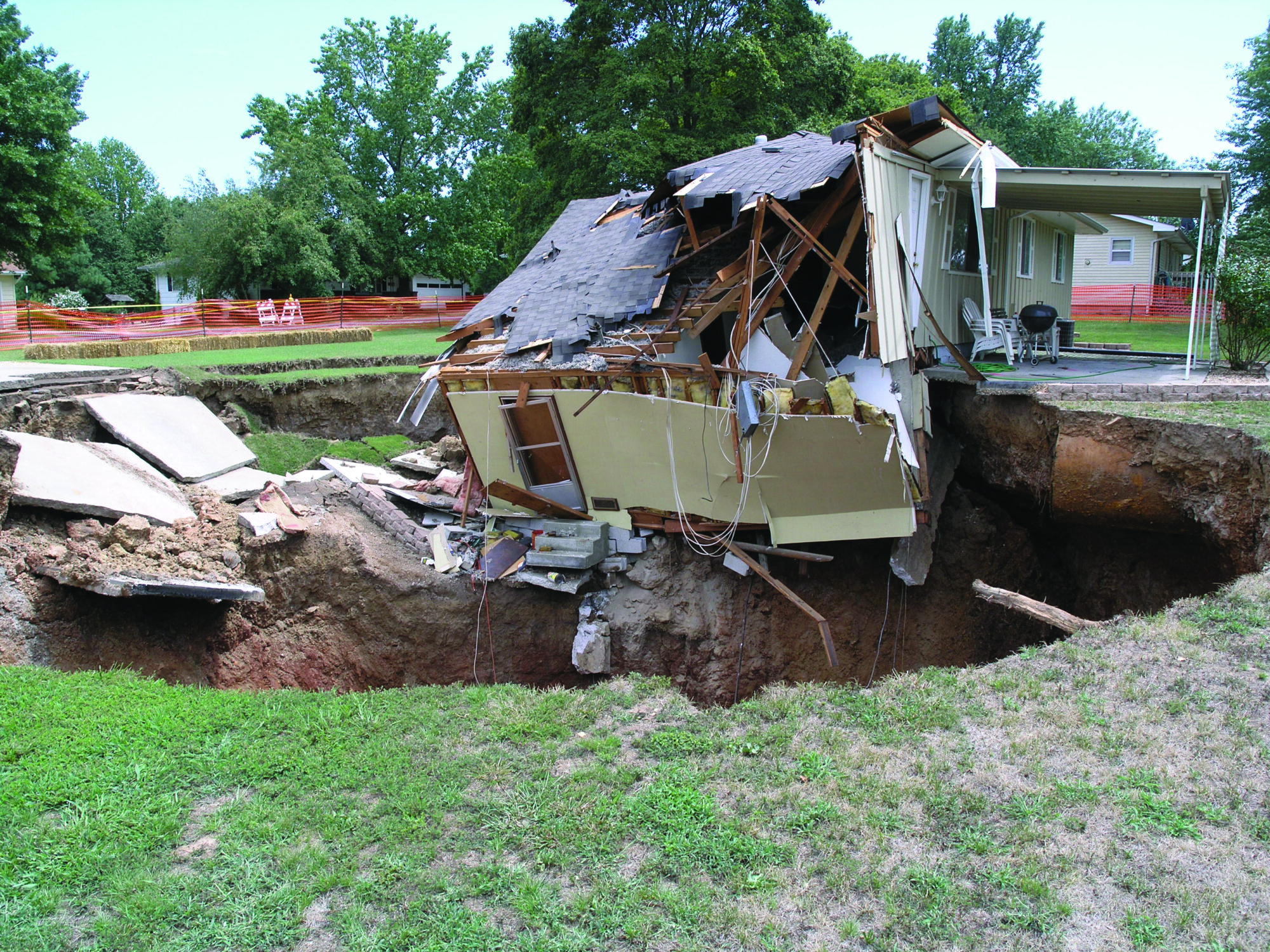
“About once a month, someone will reference the guy who disappeared into one in Florida and say ‘I just don’t want that to happen to me,’” said Fletcher Bone, a geologist with the Missouri Geological Survey. “The topic of sinkholes is often sensationalized and that causes a lot of misunderstanding. People will see a little hole open up and assume the worst. What people should know is, more often than not, a subsidence like that is due to things like failed infrastructure such as broken sewer lines, old cisterns or water wells. Sometimes it’s even just animal burrows, rotten root wads and natural erosion. There are also things you can check from the beginning to determine whether what you’re looking at is actually a sinkhole or just one of those utility-related collapses. I recommend always calling 811.” A phone call to 811 puts you in touch with Missouri811, which will check to see where underground utilities are located.
Bone has seen thousands of genuine sinkholes during his work with the environmental geology section of the Missouri Geological Survey. He’s also memorized answers to all the popular questions. Missouri’s largest sinkhole is approximately 2.2 miles long and 1 mile wide near Rocheport, with a maximum depth of 100 feet. The state’s deepest sinkhole is Slaughter Sink west of Rolla. It descends like a crater more than 170 feet.
“Throughout history, sinkholes have been seen as enigmatic and scary in how they create a connection to the underworld,” Bone said. “For me, there’s something about this underground space existing and never being seen before that I find thrilling. Sometimes, I may be the first person to ever see inside one.”
Bone says most sinkhole questions come to him or another geologist in his office. He can confirm there are no known instances of anyone disappearing into a sinkhole in Missouri. There’s only one known case of a natural sinkhole significantly damaging a building within the state.
“It’s a different geology and set of circumstances between here and Florida,” Bone said. “Florida and Missouri both have limestone and dolomite, but their water table is generally much higher than ours. That is significant for sinkholes since Florida’s population is so much larger. If new developments, like subdivisions, are getting their water from water wells, they’re going to be draining that higher, shallower water table more quickly. That means they remove the natural buoyancy of water supporting the rock, creating a chance for collapse. The Ozarks have a ton of groundwater and there are circumstances where you’ll locally draw down the aquifer, but our water table is overall much deeper and not nearly as dynamic as in Florida.”
If a collapse does occur on your property, Bone said a key first step is to check if there are any utilities, bricks or pipes within the exposed area. Such debris commonly indicates that failed infrastructure is likely the culprit.
Missouri’s largest sinkhole is approximately 2.2 miles long and 1 mile wide near Rocheport, with a maximum depth of 100 feet.
“Make sure all of your utilities, drains and guttering systems are all functioning like they are supposed to,” Bone said. “A lot of people have their gutter downspouts right next to their foundation. Water moves sediment, so the more stormwater you have, the more sediment will be moved. If you don’t move your downspouts away from your foundation, you may get settlement or formation of a sinkhole. What many people think is a sinkhole is actually just where soil has been eroded away from below vegetation by moving water.”
Bone said if there’s an “open throat,” or cave opening draining water from the collapsed area, then it’s a sinkhole.
“If someone has serious concerns about a sinkhole opening on their property, we can do a site visit to offer guidance,” Bone said. “We aren’t engineers and can’t instruct anyone how to fix it if work is required. However, the Missouri Geological Survey does have information available on basic sinkhole remediation, including how to install a graded drain filter that can stabilize a sinkhole.”
MoDNR’s Soil and Water Conservation Program also has a statewide cost-share practice designed to establish a buffer zone around a sinkhole on agricultural land to help filter runoff. Another improvement practice to help stabilize sinkholes with active erosion on agricultural land is available exclusively in Cape Girardeau, Perry and Ste. Genevieve counties.
Bone said the most important thing people should not do with sinkholes is treat them like a landfill.
“Unfortunately, if a sinkhole is near a road, you’ll see them used as an illegal dump,” Bone said. “That’s very bad. A sinkhole is a recharge area for groundwater. Water flowing into one may eventually discharge to a spring or into a gaining stream. There also may be people with water wells drilled into that aquifer. Anything that goes into the sinkhole is going to recharge the aquifer too. If you throw in antifreeze, lead-acid batteries or whatever else into the sinkhole, it may contaminate someone’s drinking water and make them sick.”
For more information on sinkholes in Missouri or to learn about sinkhole remediation, visit MoDNR’s webpage about sinkholes.

